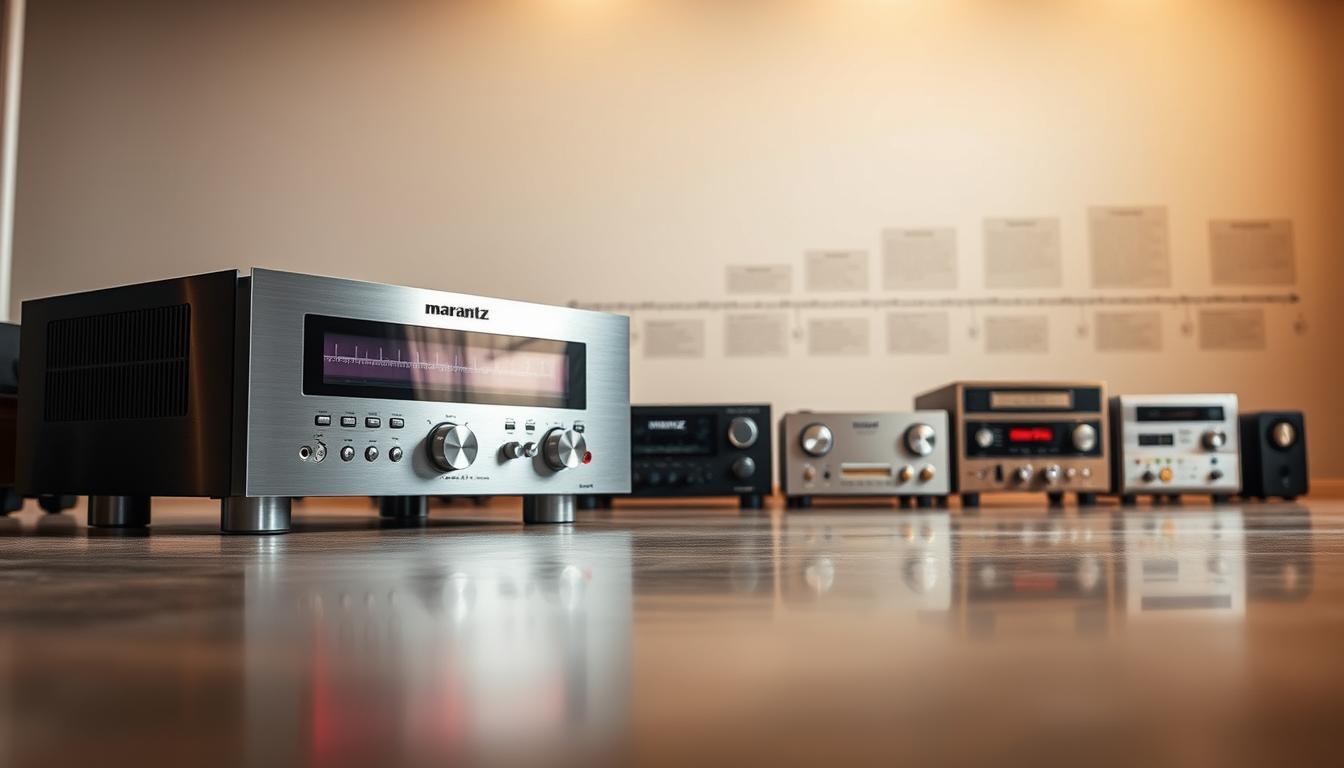Marantz started in 1953 by Saul Marantz. It has been leading in high-quality audio gear ever. Over the years, Marantz has made many receiver models. Each one is a big step forward in home audio systems.
The first Marantz receivers were made because of a need for better audio gear. This need to improve has kept Marantz at the top of the audio game. Today, Marantz receivers are known for their top-notch sound and lasting quality.
Key Takeaways
- Marantz was founded in 1953 with a focus on high-quality audio.
- The company has a rich history of innovation in receiver technology.
- Understanding Marantz receiver models by year can help you upgrade your home audio.
- Marantz receivers are known for their superior sound quality and durability.
- Exploring the evolution of Marantz receivers can provide insights into the best models for your needs.
The Legacy of Marantz: A Brief History
Saul Marantz started his audio journey in his kitchen in 1952. He built his first Audio Consolette there. This was the start of a legacy known for top-notch sound.
The Founding Vision of Saul Marantz
In 1953, Saul Marantz founded Marantz Company in Woodside, Queens, New York. He aimed to make audio equipment that would change the game. His products were for those who wanted the best sound.
The first Audio Consolette showed Marantz’s dedication to innovation and quality.
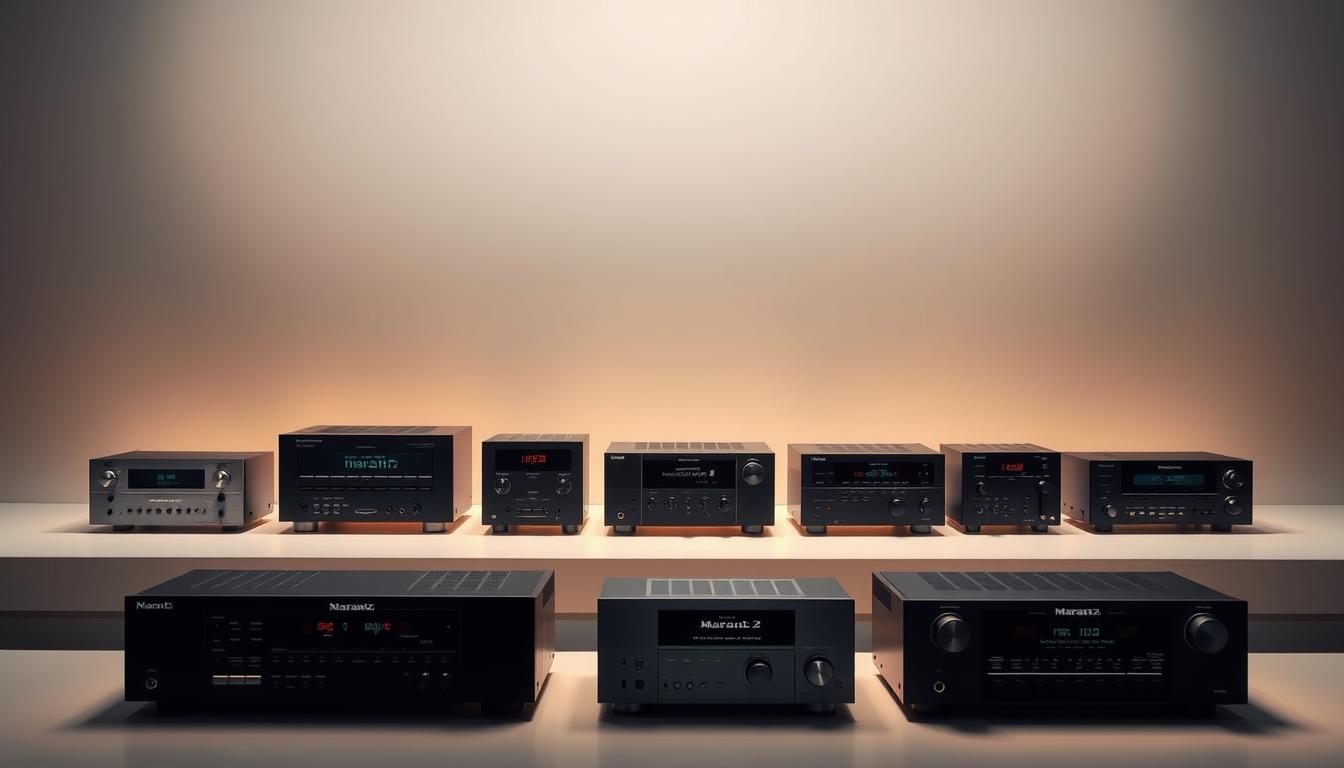
Evolution into an Audio Powerhouse
Marantz grew into a big name in audio, famous for its vintage receivers. These are loved by sound lovers today. The company’s focus on quality and new ideas led to many groundbreaking products.
| Year | Milestone | Product/Technology |
|---|---|---|
| 1952 | First Audio Consolette created | Audio Consolette |
| 1953 | Marantz Company founded | – |
| 1970s | Introduction of iconic receivers | 2200, 2300 Series |
This growth showed Marantz’s commitment to audio excellence. It also showed how it could keep up with new needs and tech.
Understanding Marantz Receiver Models By Year
To grasp Marantz receivers, you need to understand their model numbers and when they were made. This info helps you see what your receiver can do.
Decoding Marantz Model Numbers
Marantz model numbers are more than just numbers. They tell you about the series and the year it was made.
Series Designations Explained
Marantz receivers fall into series, each with its own quality and features. For example, the SR series is top-notch for home theaters.
Year Identification Methods
To find out when your receiver was made, look at the model or serial number. Marantz used different methods over time, like a coding system.
Key Technological Milestones
Marantz has hit many tech milestones, like digital signal processing and network connectivity. These steps have made their receivers better and more flexible.
| Year | Technological Milestone |
|---|---|
| 1980s | Introduction of Digital Signal Processing |
| 2000s | Network Connectivity and Multi-Room Audio |
| 2010s | HEOS Integration for Whole-Home Audio |
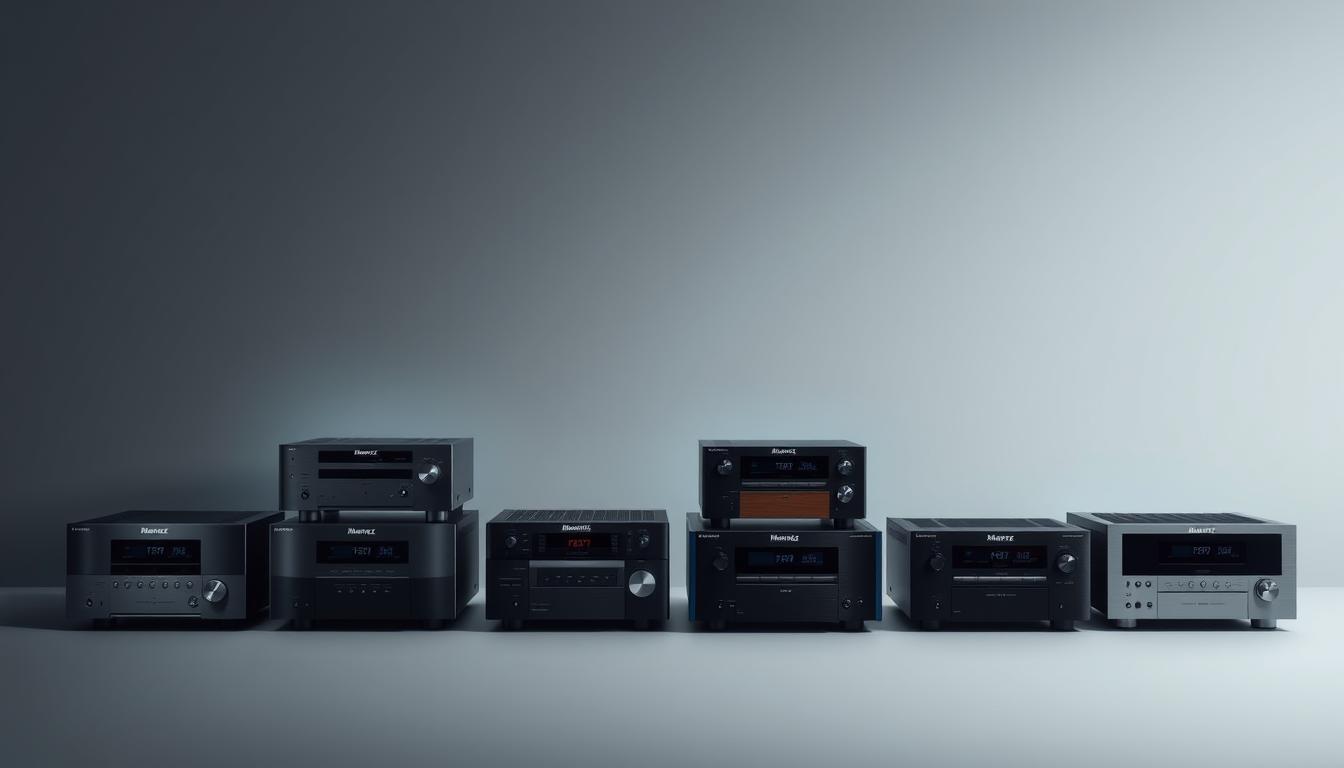
Knowing these details helps you value your Marantz receiver more. It also guides you in choosing upgrades or new purchases.
The Golden Age: 1970s Marantz Receivers
The 1970s were a golden time for Marantz, with receivers that are both durable and sound great. This decade saw the release of iconic models. These models not only shaped the audio world but are also highly sought after today.
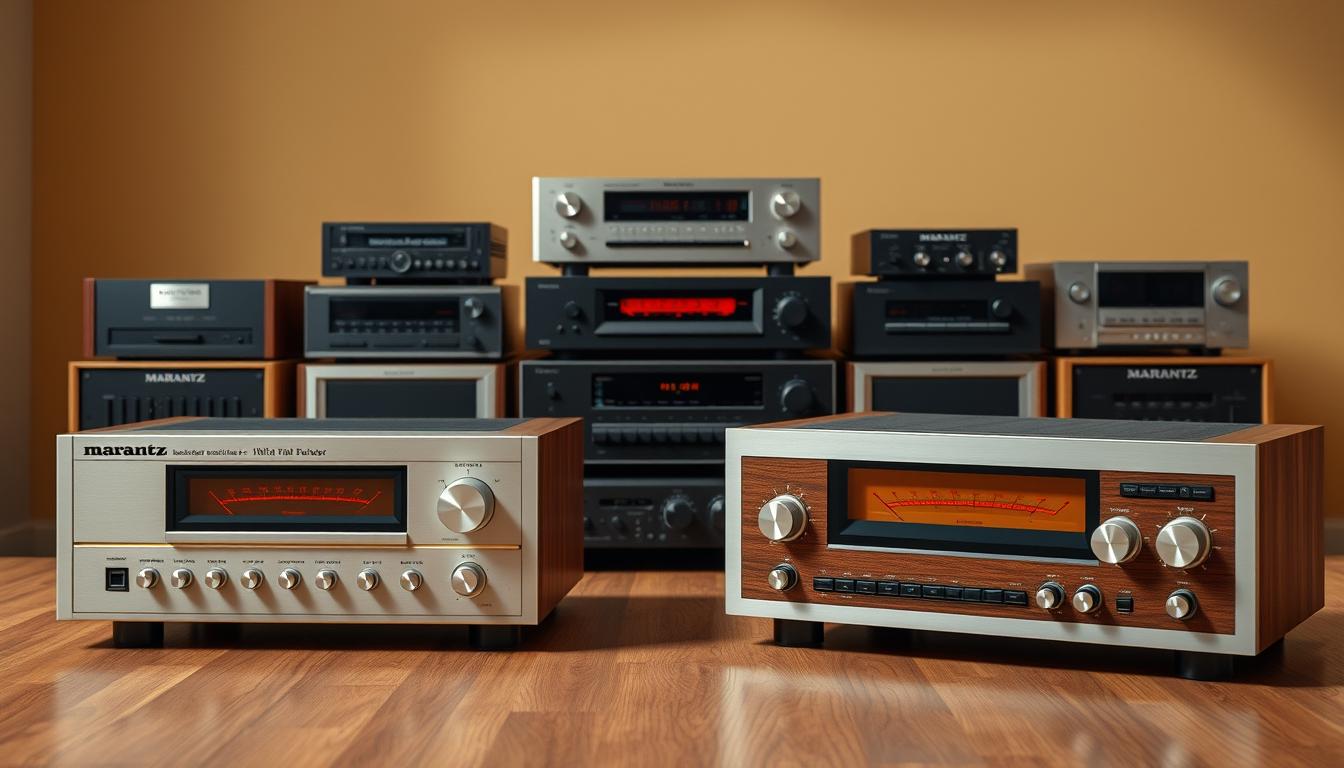
2200 Series: The Beginning of Excellence
The 2200 series was a big step for Marantz, introducing legendary models. These models were known for their strong build and innovative features. They stood out from other receivers of their time.
Model 2215 & 2220 Highlights
The Model 2215 and 2220 were praised for their clear and powerful sound. They were made to meet the growing need for high-quality home audio systems.
Model 2270 & 2275 Features
Models 2270 and 2275 are loved for their top-notch performance and durability. They had advanced circuitry, including DC coupled amplifier stages and high-quality components. These features helped them become known for their sound quality.
2300 Series: Refining the Formula
The 2300 series improved on the success of the 2200 series. It brought even more advanced technical innovations. These receivers were made to offer better performance, appealing to both audiophiles and casual listeners.
Technical Innovations
The 2300 series introduced key advancements, like better signal-to-noise ratios and more advanced tone controls. These improvements helped Marantz keep its reputation for quality audio equipment.
Collectible Status Today
Today, the 2300 series receivers are highly valued by collectors. They are sought after for their historical importance and lasting performance. Models in good condition are prized for their ability to deliver authentic vintage audio experiences.
| Model | Key Features | Collectible Status |
|---|---|---|
| 2215 | Clear sound reproduction, robust build | Moderately sought after |
| 2270 | DC coupled amplifier, high-quality components | Highly sought after |
| 2305 | Advanced tone controls, improved SNR | Sought after by collectors |
The Transition Era: 1980s Models
In the 1980s, Marantz introduced the SR series, marking a shift towards digital technology in their receivers. This decade was key for Marantz, as it brought more advanced audio technologies.
SR Series Introduction
The SR series was a big step for Marantz in the 1980s. It brought better audio capabilities. Models like the SR-1000 and SR-2000 were known for their features and sound quality.
SR-1000 & SR-2000 Highlights
The SR-1000 and SR-2000 were early models in the SR series. They offered improved sound and new features. For more on Marantz receivers, check out this retro audio guide.
Build Quality Changes
In the 1980s, Marantz improved the build quality of their receivers. The SR series was built to last, showing Marantz’s focus on durability and sound quality.
| Model | Year Introduced | Notable Features |
|---|---|---|
| SR-1000 | 1980 | Improved sound quality, additional input options |
| SR-2000 | 1982 | Enhanced digital processing, remote control |
Digital Integration Begins
The 1980s were when Marantz started adding digital technology to their receivers. This change would greatly affect the audio world.
First Digital Processing Features
Marantz introduced digital processing in the SR series. This led to clearer sound and more features for users.
Remote Control Introduction
Another big innovation was the remote control in the SR series. It made controlling audio systems easier and more convenient.
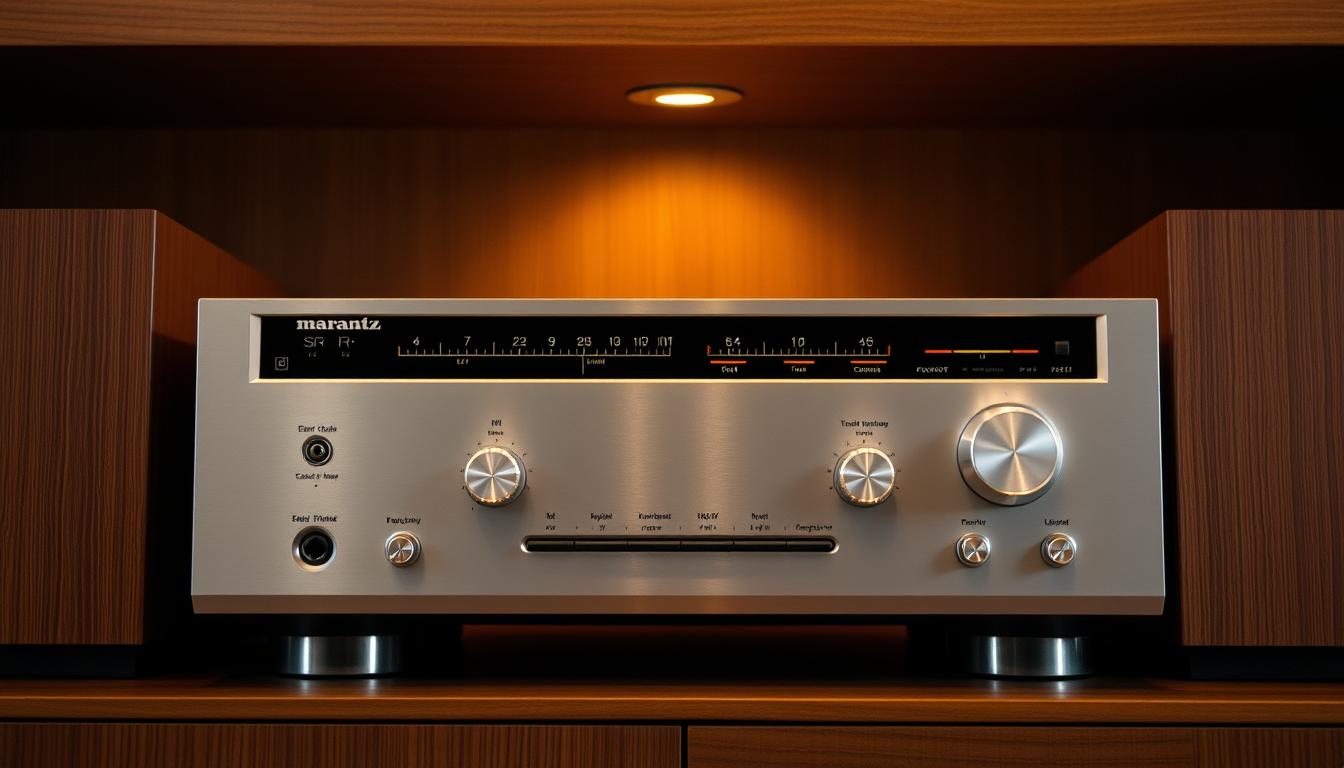
1990s Marantz Receivers: Embracing the Digital Revolution
The 1990s were a big time for Marantz as they started using digital tech. They changed home audio systems a lot. This decade brought new receiver models with cool features, setting new standards.
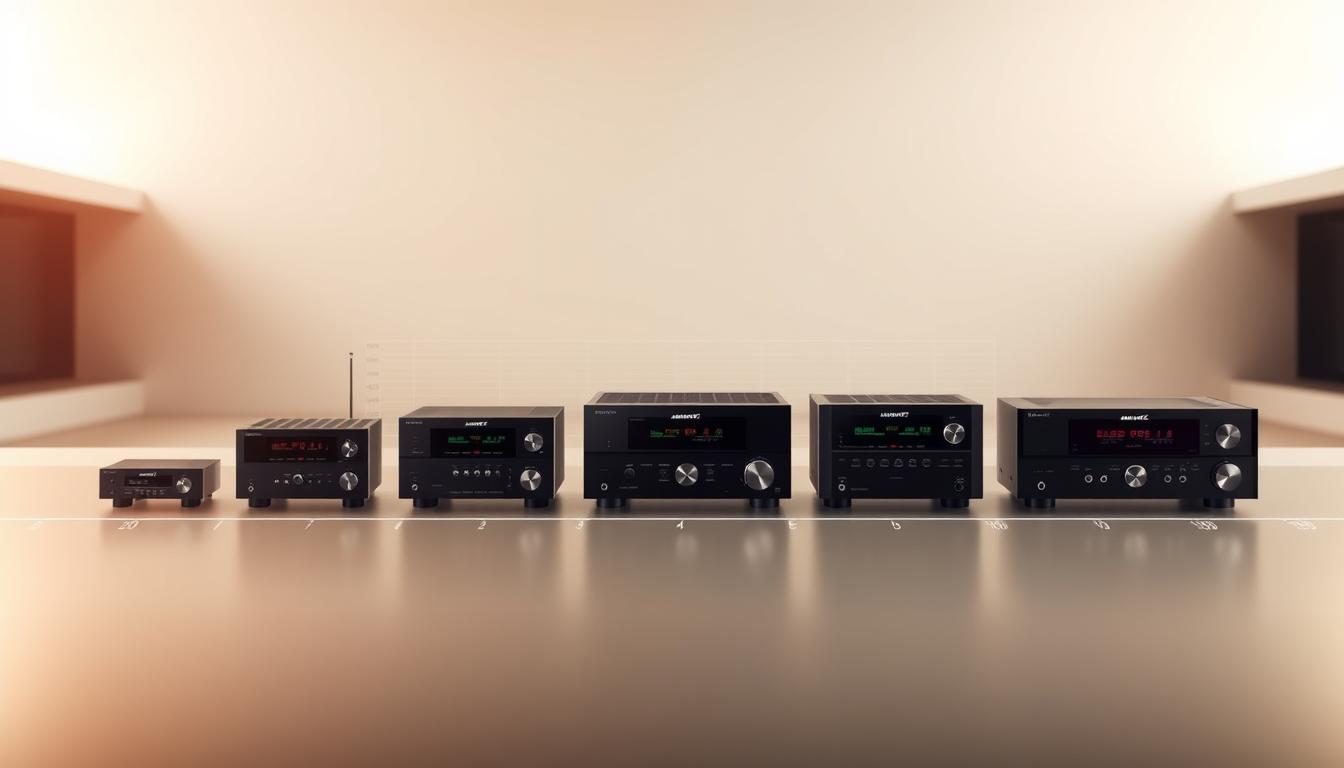
SR-96 Series: Home Theater Pioneers
The SR-96 series was a big deal for Marantz. It started the home theater movement. It was known for using Dolby Pro Logic, making sound better with surround sound.
Dolby Pro Logic Integration
Dolby Pro Logic made audio more real, turning stereo into surround sound. This was a big step for home theaters.
Multi-Channel Capabilities
The SR-96 series also let you use many speakers. This made home theaters more exciting. It brought the cinema feel to your living room.
Notable Technological Advancements
In the 1990s, Marantz also added new tech. They included digital sound processing and video switching. These made their receivers even better.
Digital Sound Processing
Digital sound processing made audio clearer. It gave users more ways to customize their sound.
Video Switching Capabilities
Video switching made it easy to switch between video sources. It helped manage big home entertainment systems.
In short, the 1990s were key for Marantz. They made big tech leaps and introduced cool receiver models. The SR-96 series, with Dolby Pro Logic and multi-channel, was a highlight. It raised the bar for home theaters.
- SR-96 series introduced Dolby Pro Logic and multi-channel capabilities.
- Digital sound processing enhanced audio quality and customization.
- Video switching capabilities simplified managing home entertainment systems.
Early 2000s: The Home Theater Evolution
In the early 2000s, Marantz changed home theater audio with the SR7000 series. This series set new standards for receiver technology. Marantz led the way in home theater advancements.
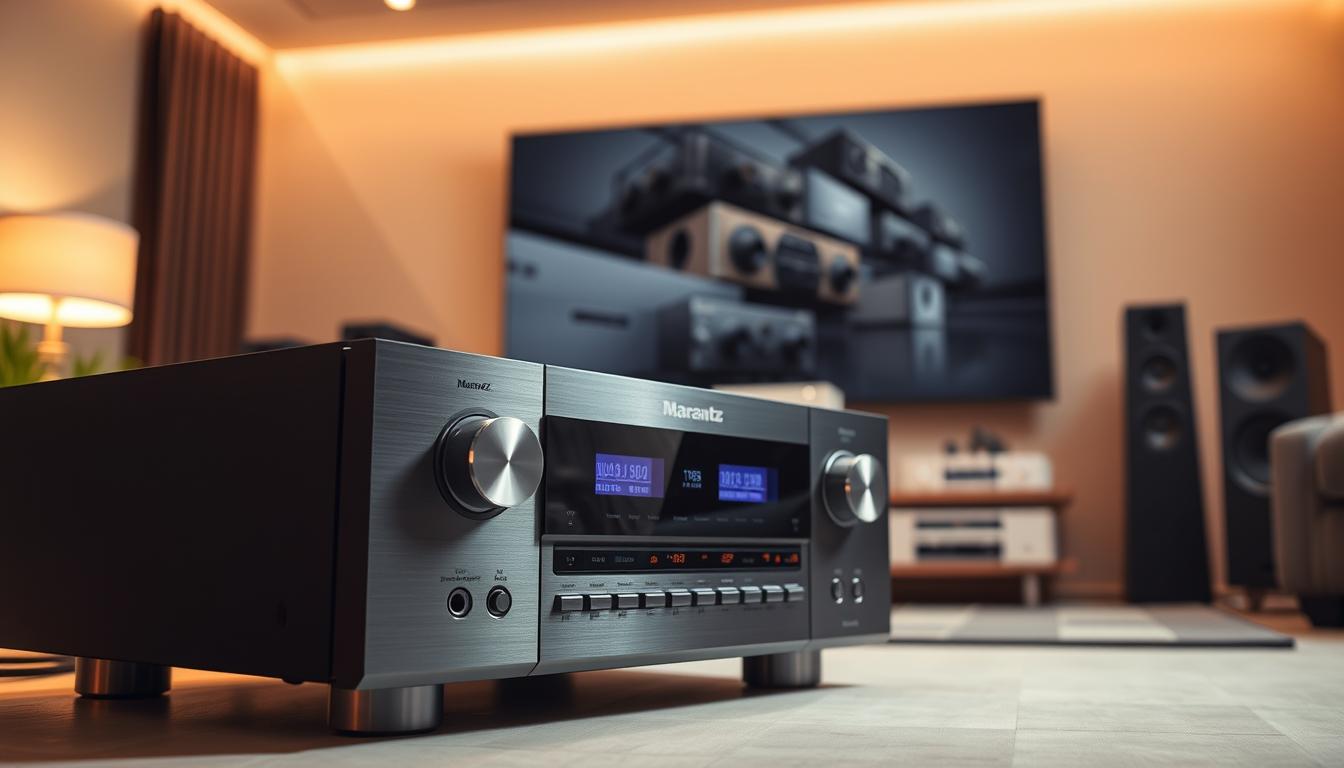
SR7000 Series: Setting New Standards
The SR7000 series was a major leap forward. It offered better performance and features for home theater fans. Each model had its own special features.
SR7200 & SR7300 Features
The SR7200 and SR7300 models improved audio processing and connectivity. They supported many audio formats, making them great for different setups.
SR7500 & SR7600 Improvements
The SR7500 and SR7600 models added advanced room calibration and more power. These updates made audio more immersive and room-specific.
Integration of Advanced Audio Formats
Marantz showed their innovation by adding new audio formats to their receivers. The SR7000 series supported Dolby Digital and DTS, making movies sound better.
Dolby Digital & DTS Support
Dolby Digital and DTS support was a big step up in audio quality. These formats brought multi-channel surround sound, improving the movie experience.
THX Certification
Some SR7000 models got THX certification. This meant they met high audio standards. It promised an authentic cinematic experience at home.
Marantz kept improving home theater tech with the SR7000 series. This series is a highlight when comparing Marantz receivers. It combined performance, features, and compatibility that was ahead of its time.
2010-2015: Network Connectivity and Smart Features
Marantz receivers changed a lot from 2010 to 2015. They started using network connectivity and added smart features. This made home audio systems more connected and useful.
NR Series: Connected Audio Experience
The NR series brought network connectivity to the forefront. It allowed users to stream services directly through their receivers. This made Marantz receivers key parts of modern home entertainment.
NR1601-1603 Slim Designs
The NR1601-1603 models were slim and perfect for tight spaces. They didn’t lose out on performance. They had network connectivity and supported many audio formats.
SR5006-7007 Full-Size Models
The SR5006 and SR7007 were the full-size models. They had advanced features like high-quality audio and lots of connectivity options. They were favorites among audiophiles.
HEOS Integration Begins
Marantz started using HEOS technology in their receivers. This changed how users interacted with their home audio systems. HEOS made streaming and multi-room audio easy.
Streaming Capabilities
With HEOS, Marantz receivers could stream music from online services. This gave users access to a huge library of music. It was a big step forward in home audio convenience.
Multi-Room Audio Solutions
HEOS also allowed for multi-room audio. Users could play different music in different rooms or sync it across rooms. This was great for those with big homes or complex setups.
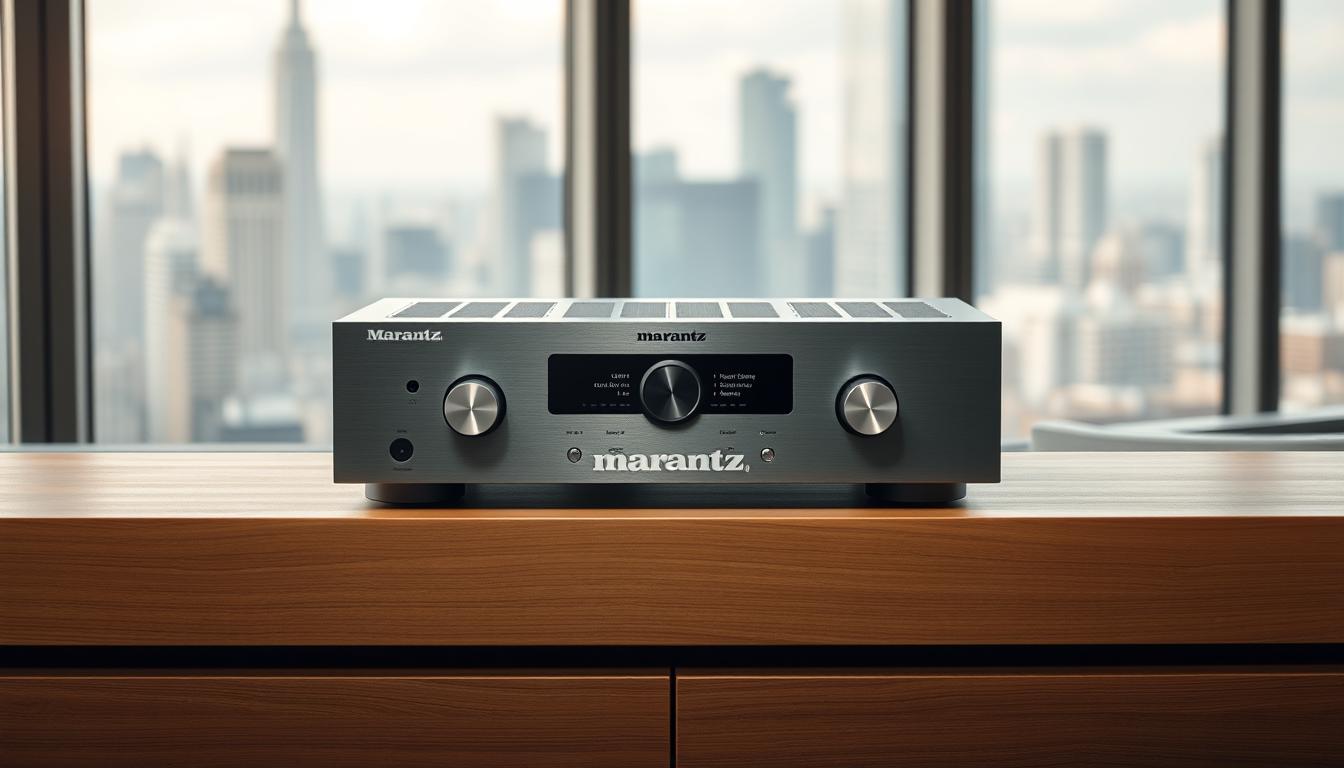
| Model | Key Features | Notable Specifications |
|---|---|---|
| NR1601 | Network Connectivity, Slim Design | 7.2 Channels, 4K Pass-through |
| SR5006 | Advanced Audio Processing, Extensive Connectivity | 7.2 Channels, Dolby Atmos Support |
| SR7007 | High-End Audio Capabilities, HEOS Integration | 9.2 Channels, High-Resolution Audio Support |
2016-2020: 4K Era and Voice Control
Marantz kept pushing the limits of their receiver series from 2016 to 2020. They introduced 4K compatibility, a big leap forward. This era also saw improvements in their SR series and the addition of voice control through various assistants.
SR Series Refinement
The SR series got a lot better during this time. It met the needs of many consumers. The SR5012 and SR6012, for example, offered great value for their price.
SR5012-6012 Mid-Range Options
These models came with the latest tech. They supported 4K and HDR. This made them perfect for a great home theater experience without breaking the bank.
SR7012-8012 Flagship Features
The SR7012 and SR8012 were the top of the line. They had advanced audio, more power, and extra connectivity. They were great for big home theaters.
| Model | Power Output | 4K/HDR Support |
|---|---|---|
| SR5012 | 7x100W | Yes |
| SR6012 | 9x100W | Yes |
| SR7012 | 9x125W | Yes |
| SR8012 | 11x125W | Yes |
Voice Assistant Compatibility
Marantz receivers from this time also worked with voice assistants. This changed how people interacted with their home entertainment.
Alexa Integration
Amazon Alexa was one of the voice assistants Marantz supported. Users could control their receivers with voice commands. This included changing the volume and selecting inputs.
Google Assistant & Siri Support
Marantz receivers also worked with Google Assistant and Apple Siri. This let users pick their favorite voice assistant. It made the experience better for everyone.
The table above shows how Marantz Receiver models improved over time. Knowing the Marantz Receiver models timeline and comparing them can help you choose the right one.
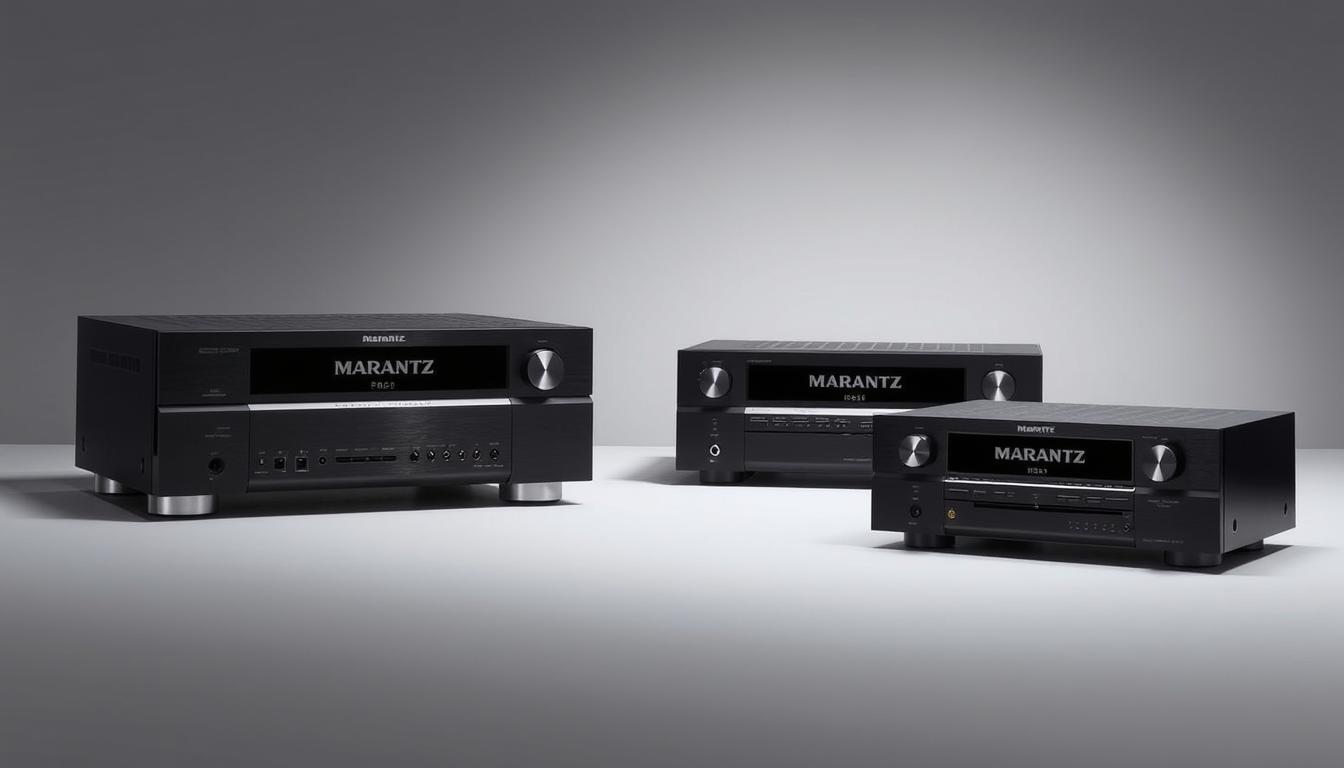
Latest Marantz Receivers (2021-Present)
Marantz has kept up with the latest in home audio with its 2021 to present receivers. These models bring new tech to improve your sound experience. They focus on better sound, advanced connections, and stylish looks.
8K-Ready Models
The newest Marantz receivers are ready for 8K. This is great for those wanting to keep their systems up-to-date.
SR Series Updates
The SR series has gotten a big boost. It now has better audio processing and more features like Dolby Atmos and DTS:X.
HDMI 2.1 Implementation
The latest Marantz receivers use HDMI 2.1. This means better 8K video and audio, making your entertainment more immersive.
CINEMA Series Introduction
Marantz has introduced the CINEMA series for a more cinematic feel at home. It’s all about top-notch audio that matches your visuals.
CINEMA70/50/40 Features
The CINEMA70, CINEMA50, and CINEMA40 have cool features. They include advanced surround sound, lots of HDMI inputs, and work with many streaming services.
Design Philosophy Changes
The CINEMA series focuses on a unified home entertainment look. It aims for both beauty and function.
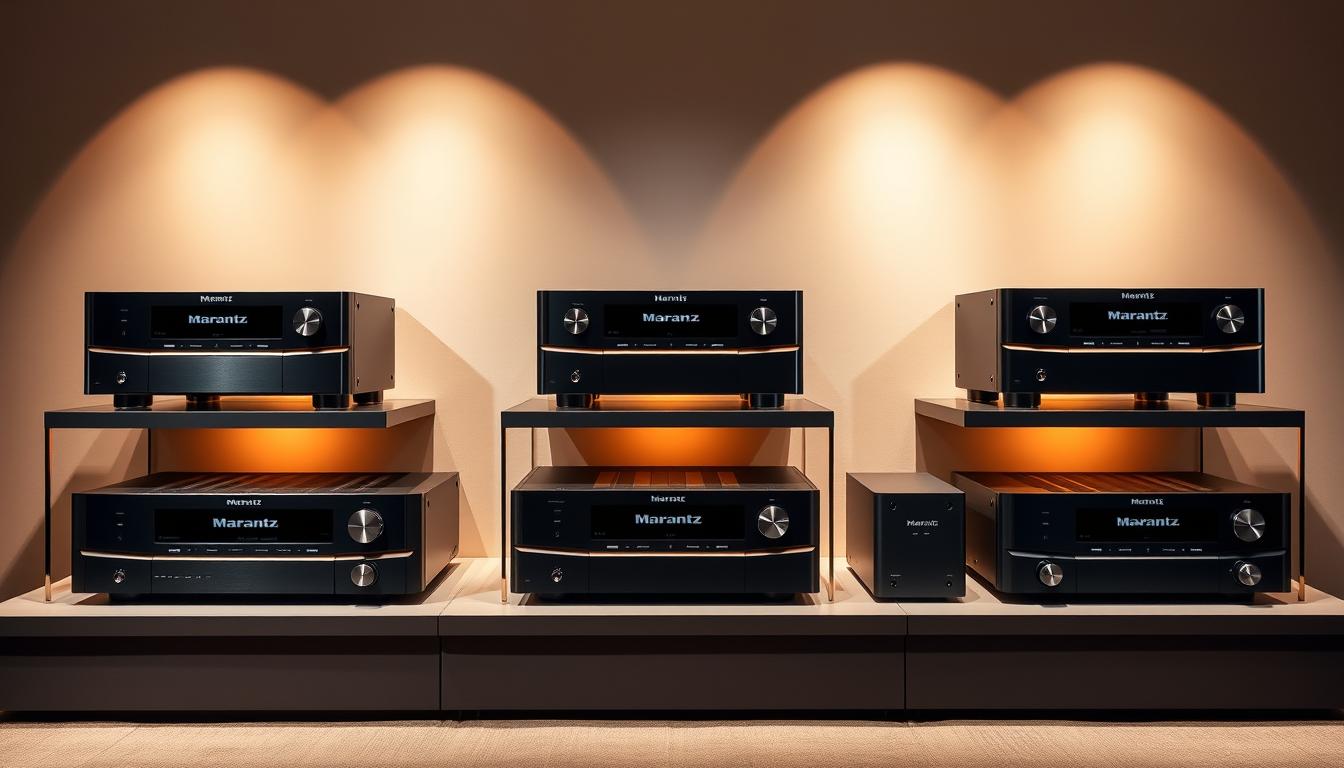
Marantz keeps pushing the bar in home audio with these advanced features and designs. It appeals to both serious listeners and casual users.
Collector’s Corner: Vintage Marantz Receivers Worth Hunting
Vintage Marantz receivers are a goldmine for those who love sound and design. These old models are sought after for their top-notch audio and historical value.
The Legendary Model 2275
The Marantz 2275 stands out among vintage receivers. It’s known for its great sound and solid construction.
Sound Characteristics
The 2275 is loved for its clear and detailed sound. It has a strong output, making it a hit with sound enthusiasts. Its high-quality components and meticulous design make it legendary.
Current Market Value
The price of a Marantz 2275 depends on its condition and rarity. A well-kept unit can cost between $800 to $1,200.
Other Sought-After Vintage Models
Other vintage Marantz models are also highly desired by collectors.
Model 2325 & 2385
The 2325 and 2385 models are loved for their advanced features and top-notch sound. Here’s a comparison:
| Model | Power Output | Notable Features |
|---|---|---|
| 2325 | 125W per channel | Advanced graphic equalizer |
| 2385 | 150W per channel | High-speed VU meters |
Model 4400 & 4300
The 4400 and 4300 series are the best of Marantz’s pre-amplifier and amplifier tech. They offer exceptional sound quality and versatile connectivity options.
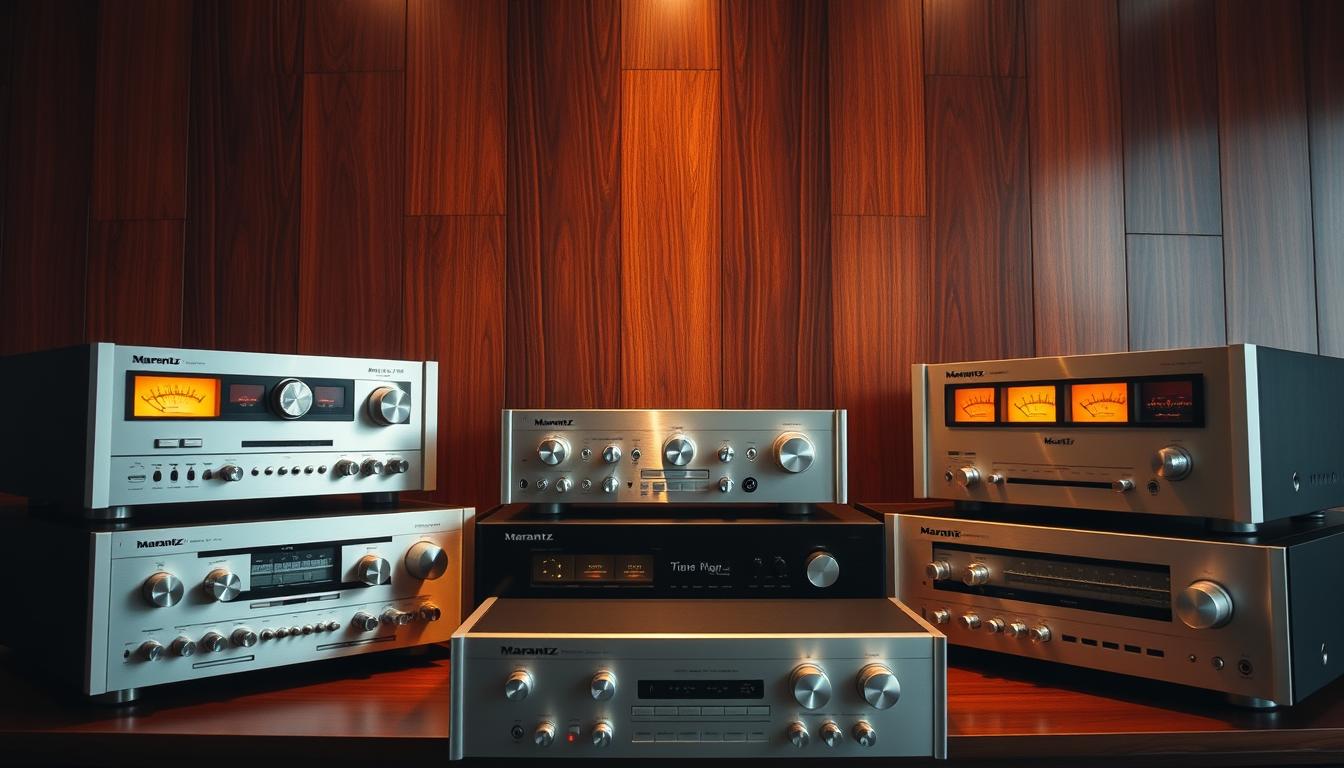
Comparing Vintage vs. Modern Marantz Receivers
Looking at vintage and modern Marantz receivers shows a big difference. The sound quality, features, and build have changed a lot. Marantz has kept up with technology, giving people many options.
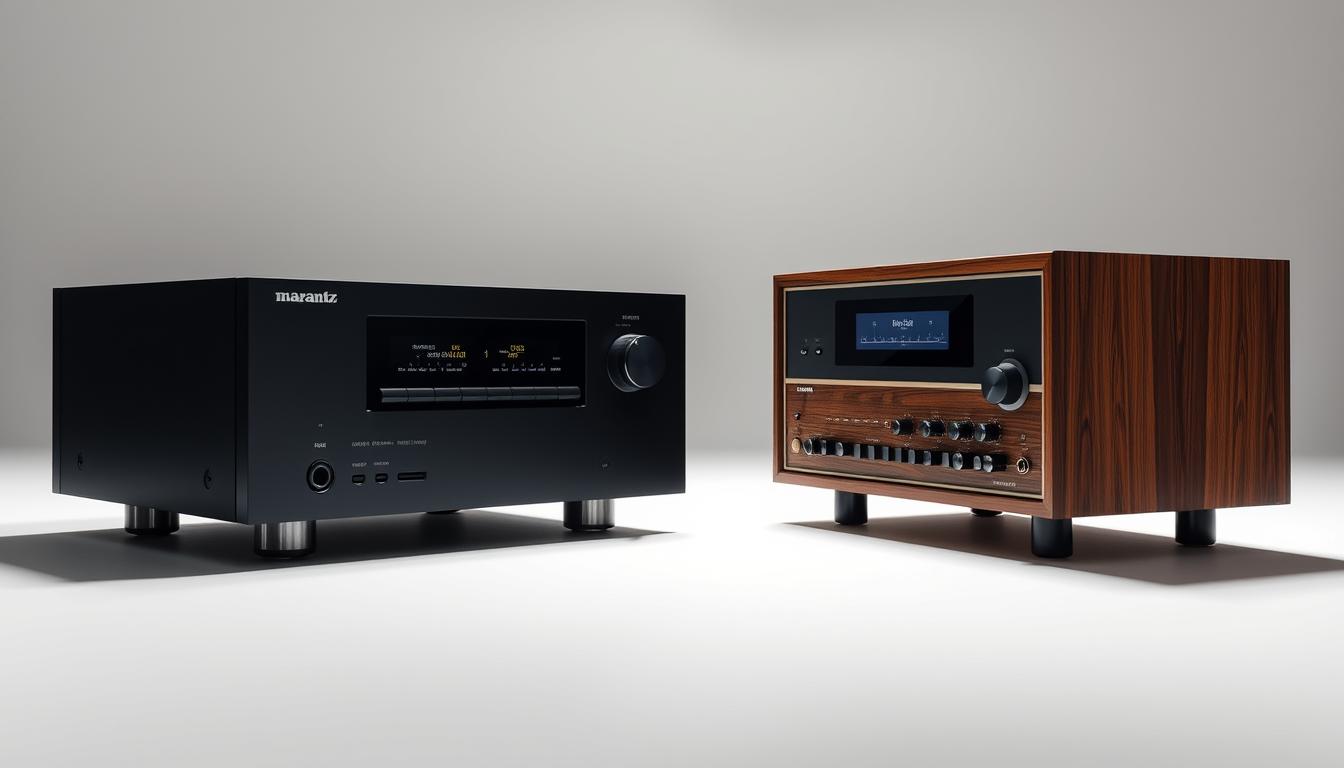
Sound Signature Differences
The sound of Marantz receivers has changed a lot. Old receivers are loved for their warm sound. New ones are praised for being clear and precise.
Warmth vs. Precision
Old Marantz receivers, from the 1970s and 1980s, have a unique warm sound. New receivers, thanks to digital tech, offer a clearer sound.
Power Handling Characteristics
New Marantz receivers can power more speakers better than old ones. This makes them great for different home audio setups.
Feature Set Evolution
Marantz receivers have gotten a lot more features over time. Old models were simple, but new ones have lots of cool features.
Analog Simplicity vs. Digital Versatility
Old Marantz receivers were easy to use. New ones have Wi-Fi, voice control, and more, making them versatile.
Build Quality Considerations
Both old and new Marantz receivers are well-made. But, new ones use different materials and tech.
Choosing between old and new Marantz receivers depends on what you want. If you like a warm sound and simplicity, go for an old one. For the latest tech and clear sound, choose a new one.
Marantz Receiver Specifications Explained
Understanding Marantz receiver specs is key to getting the most out of your home audio. It’s about power, connectivity, and how they’ve changed over time.
Understanding Power Ratings
Power ratings are very important for Marantz receivers. They show how well the receiver can power your speakers.
RMS vs. Peak Power
RMS power is what the receiver can handle all the time. Peak power is for quick, high bursts. Knowing the difference helps pick the right receiver.
Impedance Considerations
Matching the receiver’s impedance with your speakers is key for great sound. Marantz makes receivers for many speaker types, but matching is important for the best sound.
Connectivity Options Through the Years
Marantz receivers have changed a lot in connectivity. They’ve moved from old analog to new digital options.
Analog Connections Evolution
Analog connections have always been in Marantz receivers. They’ve improved over time for better sound.
Digital Interface Development
New digital inputs like HDMI and optical have made Marantz receivers better. They let you connect more devices and get better sound.
Here’s a quick look at how specs have changed:
| Specification | Early Models | Modern Models |
|---|---|---|
| Power Rating | Lower RMS Power | Higher RMS Power |
| Analog Connections | RCA, Phono | RCA, XLR |
| Digital Interfaces | Optical, Coaxial | HDMI, USB |
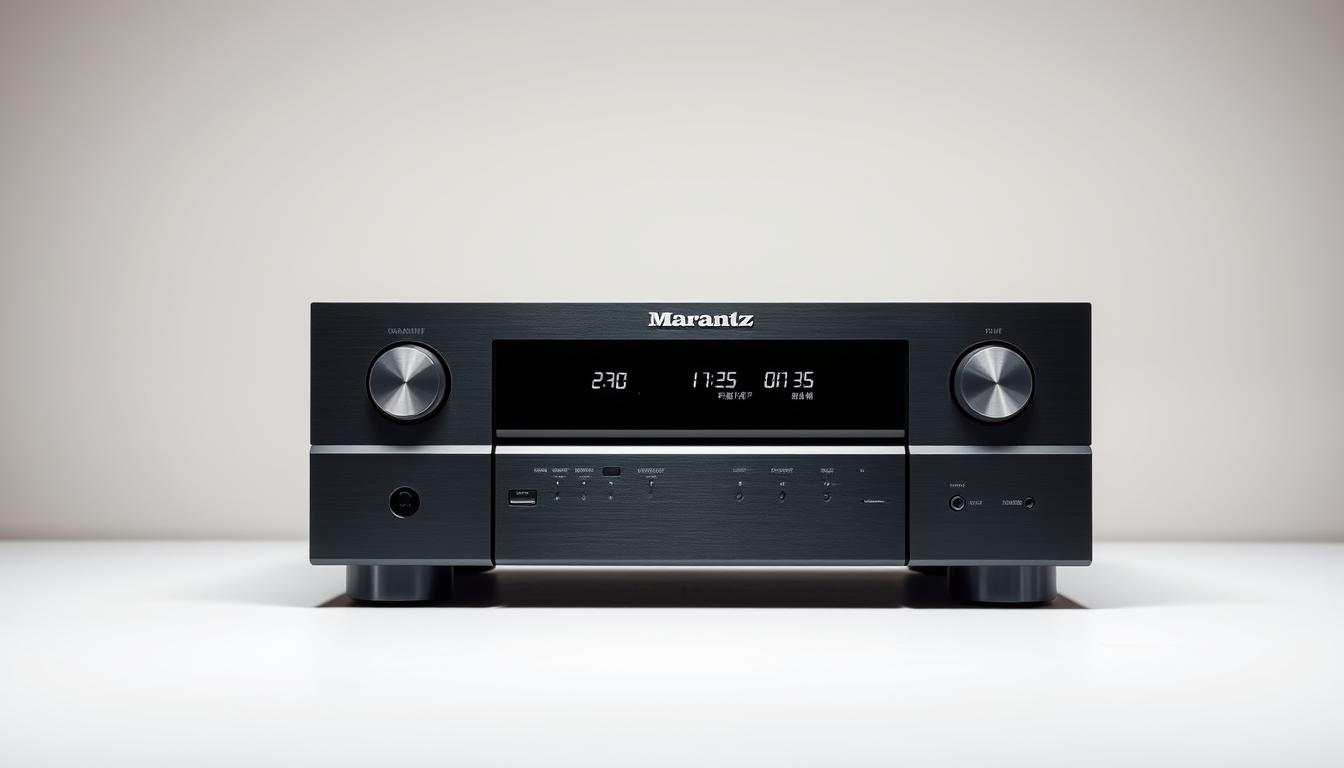
Getting to know Marantz receiver specs is vital for a great home audio setup. Look at power and connectivity to find the best receiver for you.
Where to Buy Marantz Receivers
Looking for a new or vintage Marantz receiver? You have several options. Marantz is known for quality and performance, making them popular among audiophiles.
New Models: Authorized Dealers vs. Online
For new Marantz receivers, you can buy from authorized dealers or online. Authorized dealers give you official warranties and support. Online retailers might have better prices and reviews to help you decide.
Warranty Considerations
Make sure you get a warranty with new purchases. It protects your investment and offers support from Marantz.
Price Comparison Strategies
Compare prices to find the best deal. Use price comparison tools or check Marantz’s website for promotions.
Vintage Models: Finding Quality Used Equipment
Vintage Marantz receivers are loved for their sound and nostalgic charm. Look for them on auction sites and audio forums.
Auction Sites and Forums
Platforms like eBay and audio forums are great for vintage Marantz receivers. Always research the seller before buying.
Inspection Checklist
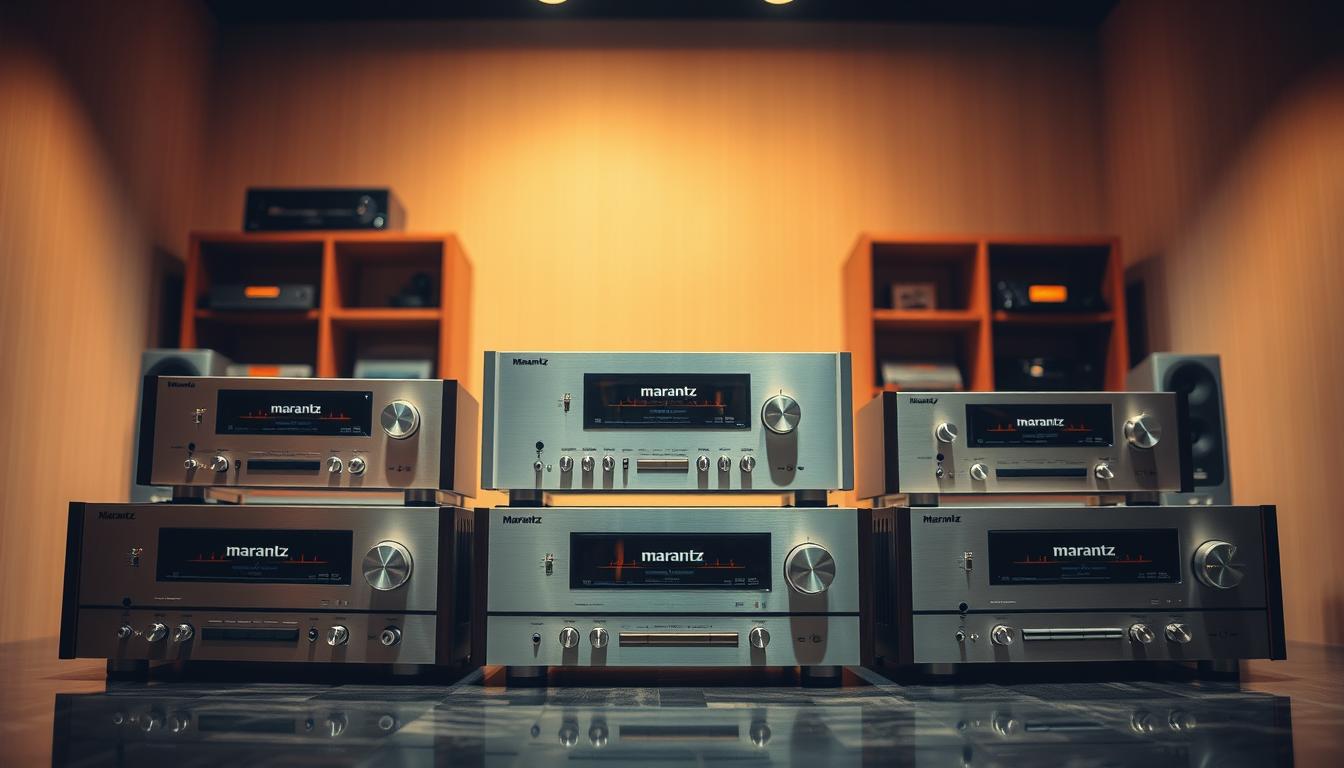
By being careful in your search and purchase, you can find a Marantz receiver that improves your home audio.
How to Choose the Right Marantz Receiver for Your Setup
Choosing the right Marantz receiver can be tricky. You need to think about what you need for your home audio system. It’s all about finding a receiver that fits your specific needs.
Assessing Your Room and Equipment Needs
Before picking a Marantz receiver, check your room’s sound quality and your equipment. Think about your room’s size and the speakers you have.
Speaker Matching Considerations
Make sure your speakers and receiver are a good match. Check your speakers’ power needs and impedance to find the right Marantz receiver.
Room Size and Acoustics
The size of your room and its sound quality are key. Bigger rooms need more powerful receivers for good sound.
Budget Considerations
Your budget is important when choosing a Marantz receiver. Marantz has models for every budget, from affordable to high-end.
Value Models vs. Flagship Features
Decide if you need the latest features or a simpler model. Look at Marantz Receiver reviews to see what each model offers.
Long-Term Investment Perspective
Think about the long-term value of your choice. A more expensive Marantz receiver might last longer and sound better, making it a good investment for audiophiles.
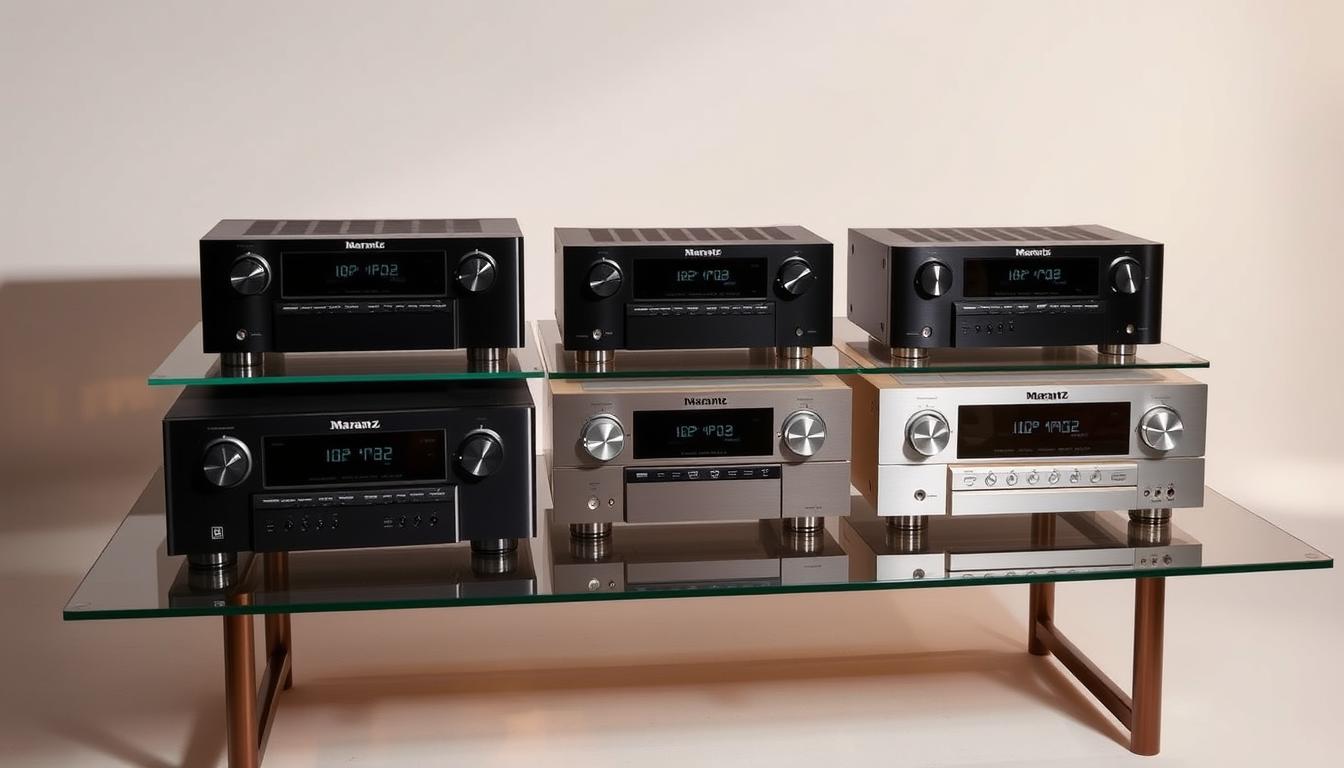
By carefully looking at your needs and budget, you can choose the right Marantz receiver. Use Marantz Receiver comparison guides to find the perfect fit for your home audio setup.
Setting Up Your Marantz Receiver for Optimal Performance
To get the most out of your Marantz receiver, setting it up right is key. You need to know the Marantz Receiver specifications and set it up for your audio setup.
Room Calibration Systems Through the Years
Marantz receivers have gotten better at room calibration. Audyssey Evolution is a big part of this, making sound adjustments more accurate for your room.
Audyssey Evolution
Audyssey is a big deal in Marantz’s tech. It offers automatic room correction for the best sound quality.
Manual vs. Automatic Calibration
Automatic calibration is easy, but manual adjustments let you fine-tune. Knowing your Marantz Receiver setup options is key for the best sound.
Speaker Matching and Placement Tips
Getting your speakers right is key for a great sound. Ideal Speaker Configurations depend on your room and how many speakers you have.
Ideal Speaker Configurations
A good speaker setup makes a big difference. Think about your room size and what you like to listen to.
Subwoofer Integration
Adding a subwoofer right can make your sound richer. Adjust its placement and settings for your room’s sound.
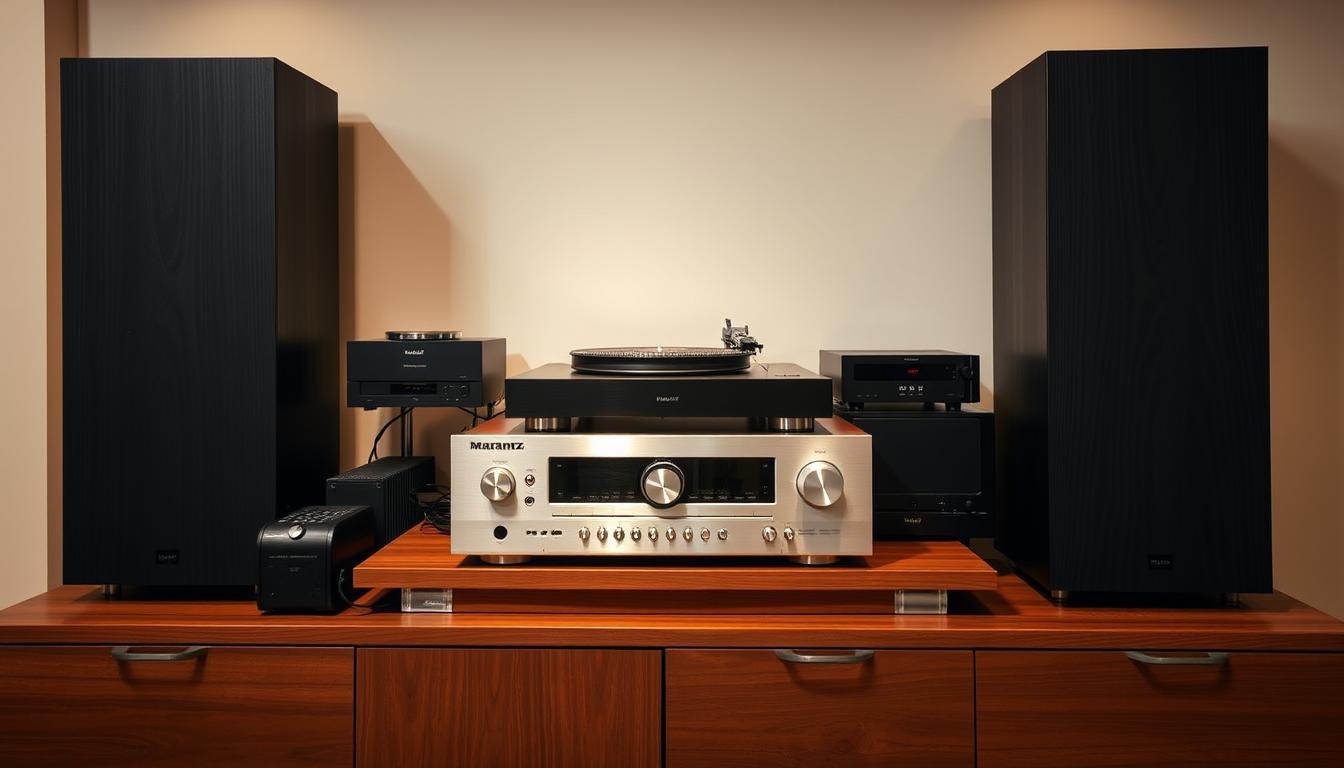
Follow these tips and know your Marantz Receiver specifications for the best audio setup. It will meet all your entertainment needs.
Maintenance and Care for Your Marantz Receiver
Looking after your Marantz receiver, old or new, is key. It keeps your device running smoothly and lasts longer.
Preserving Vintage Models
Vintage Marantz receivers, like those for vinyl, need extra care. It’s important to focus on specific parts to keep them in top shape.
Capacitor Replacement
Capacitors can wear out over time. Swapping them for better ones boosts your receiver’s sound and stability.
Cleaning and Restoration
Use soft cleaning methods to preserve your vintage receiver’s look and sound. Stay away from harsh chemicals that could harm it.
Keeping Modern Receivers in Top Condition
Modern Marantz receivers also need regular upkeep. Keeping them cool and updating the software is vital.
Ventilation Requirements
Good airflow stops overheating. Place your receiver where it can breathe and make sure vents are clear.
Firmware Update Importance
Updating your receiver’s software brings new features and better performance. Check Marantz’s site for updates and follow their guide.
Conclusion: The Enduring Appeal of Marantz Receivers
You’ve looked into Marantz Receiver Models By Year, and it’s obvious their dedication to quality and innovation has lasted. From the start of Marantz Receiver history to today’s models, they’ve always aimed for audio excellence.
Whether you love vintage items or the latest tech, Marantz receivers mix performance with heritage. If you’re curious about other top brands, check out Yamaha receiver models by year to boost your home audio.
Marantz’s legacy keeps inspiring new fans of audio, making their receivers a key part of top-notch home audio systems.
FAQ
What is the significance of Marantz in the audio industry?
Marantz is a top name in audio equipment. They make high-quality receivers, amplifiers, and more. They’ve greatly influenced the audio world.
How do I decode Marantz receiver model numbers?
To understand Marantz model numbers, learn their numbering system. It shows the series, features, and when it was made.
What are the key technological advancements in Marantz receivers over the years?
Marantz receivers have grown a lot. They now use digital tech, support Dolby Atmos and DTS:X, and connect to networks. They also work with voice assistants.
What makes the 1970s Marantz receivers, such as the 2200 and 2300 series, so special?
The 1970s Marantz receivers, like the 2200 and 2300 series, are a highlight. They’re known for their great sound, build, and new features. This makes them very popular among collectors.
How have Marantz receivers evolved in terms of home theater capabilities?
Marantz receivers have changed a lot for home theaters. They now handle surround sound better, support Dolby Atmos and DTS:X, and handle 4K/8K video.
What are the differences between vintage and modern Marantz receivers?
Old Marantz receivers have a warm, analog sound. New ones have digital features, better sound, and more ways to connect.
How do I choose the right Marantz receiver for my home audio setup?
Pick the right Marantz receiver by thinking about your room size, what equipment you have, your budget, and what features you want. Look for Dolby Atmos or voice assistant support.
How do I set up my Marantz receiver for optimal performance?
For the best sound, use the room calibration system in your Marantz receiver. Adjust speaker placement and set up your room’s acoustics.
Where can I buy Marantz receivers, both new and vintage?
Buy new Marantz receivers from authorized dealers or online. For vintage ones, check online marketplaces, specialty stores, and collector groups.
How do I maintain and care for my Marantz receiver?
Keep your Marantz receiver in top shape by cleaning it right, updating its firmware, and doing regular checks. This ensures it works well.
What are some of the most sought-after vintage Marantz receiver models?
The Model 2275, 2200, and 2300 series are highly wanted. They’re known for their sound, build, and history.
How have Marantz receiver specifications evolved over the years?
Marantz receivers have gotten better over time. They now have more power, more ways to connect, and features like Dolby Atmos and DTS:X.
